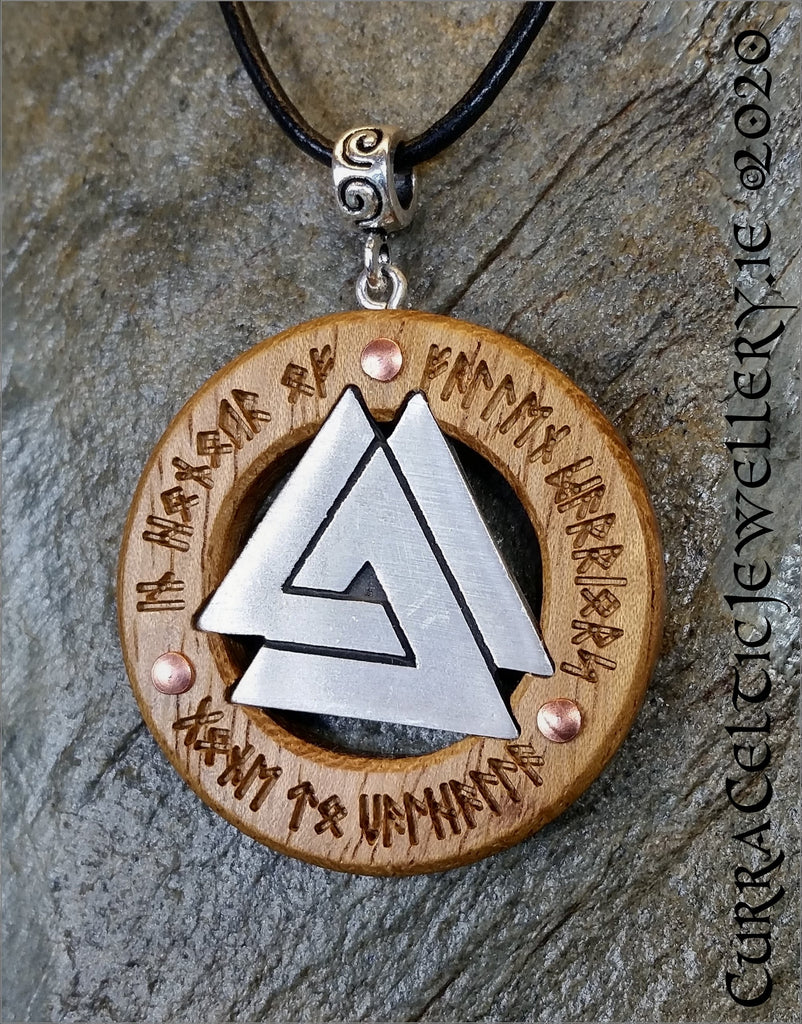

The Anti-Defamation League notes that "nonracist pagans may also use this symbol, so one should carefully examine it in context rather than assume that a particular use of the symbol is racist. The valknut has seen some use by White supremacists. In Civilization VI, the valknut is the national symbol of Norway, which in the game is led by Harald Hardrada and mostly representative of Vikings rather than the modern country. The symbol appears as the fretboard inlay on some of Arch Enemy/ Carcass guitarist Michael Amott's signature Dean Guitars "Tyrant" models, and it is also used as a logo by American engineering firm RedViking. In Europe, the Swedish forest products company Svenska Cellulosa Aktiebolaget uses a triquetra valknut as their logo, which can be commonly seen on many products produced by the company the DFB has used a logo inspired by the unicursal form of the valknut for the Germany national football team since 1991. The valknut symbol is used as a religious symbol by adherents of Heathenry, a new religious movement inspired by historic Germanic paganism. The symbol is used for a variety of purposes in modern popular culture. The valknut is topologically equivalent to either the Borromean rings, the trefoil knot, or (in modern use only) a closed three-link chain, depending on the particular artistic depiction:Īs Borromean rings on the Stora Hammars I stone Other īecause the symbol appears on picture stones with Odin and on burial gifts in the Oseberg ship burial, Rudolf Simek says that the symbol may have been associated with religious practices surrounding death. ĭavidson says that similar symbols are found beside figures of wolves and ravens on "certain cremation urns" from Anglo-Saxon cemeteries in East Anglia. Odin had the power to lay bonds upon the mind, so that men became helpless in battle, and he could also loosen the tensions of fear and strain by his gifts of battle-madness, intoxication, and inspiration. This is thought to symbolize the power of the god to bind and unbind, mentioned in the poems and elsewhere. Hilda Ellis Davidson theorizes a connection between the valknut, the god Odin and "mental binds":įor instance, beside the figure of Odin on his horse shown on several memorial stones there is a kind of knot depicted, called the valknut, related to the triskele. The Tängelgårda stone from Gotland, Sweden features valknuts below a depiction of a horse " Comparisons have been made between this symbol description and the symbol known as the valknut. It was made of hard stone with three sharp-pointed corners just like the carved symbol hrungnishjarta. Several explanations for the symbol have been proposed:Ĭhapter 17 of the 13th century Prose Edda book Skáldskaparmál contains the following description of the heart of the jötunn Hrungnir "Hrungnir had a heart that was famous.

In the English language the looped four-cornered symbol is called Saint John's Arms. In Norwegian Bokmål, the term valknute is used for a polygon with a loop on each of its corners. Although other forms are topologically possible, these are the only attested forms found so far. This tricursal form can be seen on one of the Stora Hammars stones, as well as upon the Nene River Ring, and on the Oseberg ship bed post. The symbol also appears in tricursal form, consisting of three linked triangles, topologically equivalent to the Borromean rings. This unicursal form is found, for example, on the Tängelgårda stone. The symbol appears in unicursal form, topologically a trefoil knot also seen in the triquetra. The historically attested instances of the symbol appear in two traditional, topologically distinct, forms. Additionally, the valknut appears prominently on two picture stones from Gotland, Sweden: the Stora Hammars I stone and the Tängelgårda stone. A wooden bed in the Viking Age Oseberg Ship buried near Tønsberg, Norway features a carving of the symbol on an ornately stylized bedpost and the Oseberg tapestry fragments, a partially preserved tapestry found within the ship burial, also features the symbol. The symbol is prominently featured on the Nene River Ring, an Anglo-Saxon gold finger ring dated to around the 8th to 9th centuries. The valknut appears on a wide variety of objects found in areas inhabited by the Germanic peoples. A section of the Stora Hammars I stone in Gotland, Sweden depicts a valknut in a central and predominant position, appearing alongside figures interpreted as Odin with a characteristic spear shunting another figure into a burial mound while a raven is overhead and another man is hanged.


 0 kommentar(er)
0 kommentar(er)
